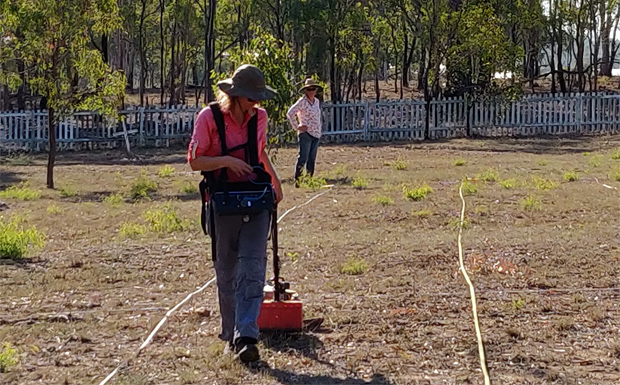
November 13, 2019
Most people have heard of the Spanish flu, the 1918-19 pandemic which killed at least 25 million people around the world at the end of World War I.
What most people don’t know, however, is that one of the places where the influenza hit hardest in Australia was at Cherbourg, where an estimated 90 people died.
This is about to change, thanks to the efforts of a team from the University of Queensland and research by a Queensland historian at the State Archives.
Brisbane researcher Matthew Wengert told southburnett.com.au he has had a long interest in the pandemic and the effect it had on Australian towns.
His interests collided accidentally when he became co-curator of the Barambah Pottery exhibition in 2016.
While in Cherbourg for the exhibition, he heard stories about flu deaths. He then sought permission from Aunty Sandra Morgan at The Ration Shed to research Cherbourg’s pandemic story.
“I accessed the official records; there are a lot of gaps in these records – a lot of files are missing – but I found that out of a population of 610 people at Barambah Mission (the old name for Cherbourg) a figure of 89 or 90 deaths can be relied upon,” he said.
This is a mortality rate of about 15 per cent.
“That’s a dreadfully high rate for a small community,” Matthew said.
In comparison, the mortality rate for Australia as a whole was about 0.003 per cent.
The only other place to have a similarly high death rate was Taroom Aboriginal Mission where more than 25 people died.
Ironically, the flu was spread by soldiers returning from the Great War.
Matthew said the disease affected young adults – especially young men – the hardest.
“Its biology was perfectly matched for armies,” he said.
“It was carried between continents by soldiers, and was easily spread as the soldiers were living in close quarters.”
Matthew has prepared lists of names of the Cherbourg pandemic victims which have been added to the records held at The Ration Shed Museum.
But what happened to all these people?
That’s a question that three researchers from the University of Queensland were hoping to solve at Cherbourg on Monday and Tuesday this week.
Kerry Kilner, Research Fellow from the School of Communication and Arts; archaeologist Kelsey Lowe (who specialises in soil chemistry) and volunteer assistant Angela Gardner investigated suspected mass graves near the Cherbourg Cemetery using non-invasive equipment.
Kerry became interested in Cherbourg’s pandemic story after speaking to local Elder Uncle Eric Law at a BlackWords storytelling session at the Winifred Fisher Indigenous Knowledge Centre in Cherbourg last year.
She also has a personal connection to the pandemic; her great-grandmother died of the disease in Fiji when it swept through the Pacific.
The UQ team used a magnetic gradiometer to assess potential sites for the mass graves.
These sites had been suggested in a Cherbourg Council survey in 2012 but had not been confirmed.
“We identified two mass graves in the cemetery,” Kerry said.
These areas have now been pegged out.
They then mapped parts of the old Cherbourg cemetery.
The UQ team will now prepare a report on their findings for Cherbourg Council.
Historian and author Lesley Williams told southburnett.com.au the story of the pandemic in Cherbourg needed to be told.
The Ration Shed is now working on how best to honour the memories of those who died almost exactly 100 years ago.
























